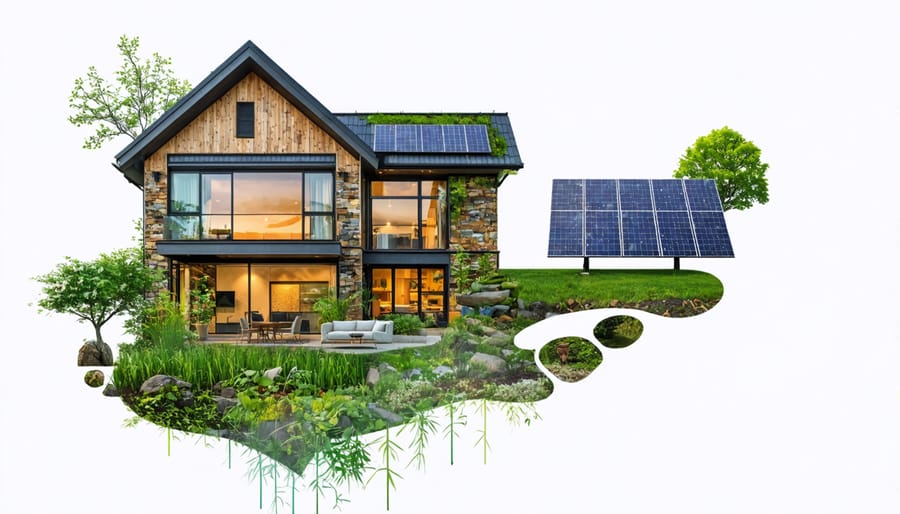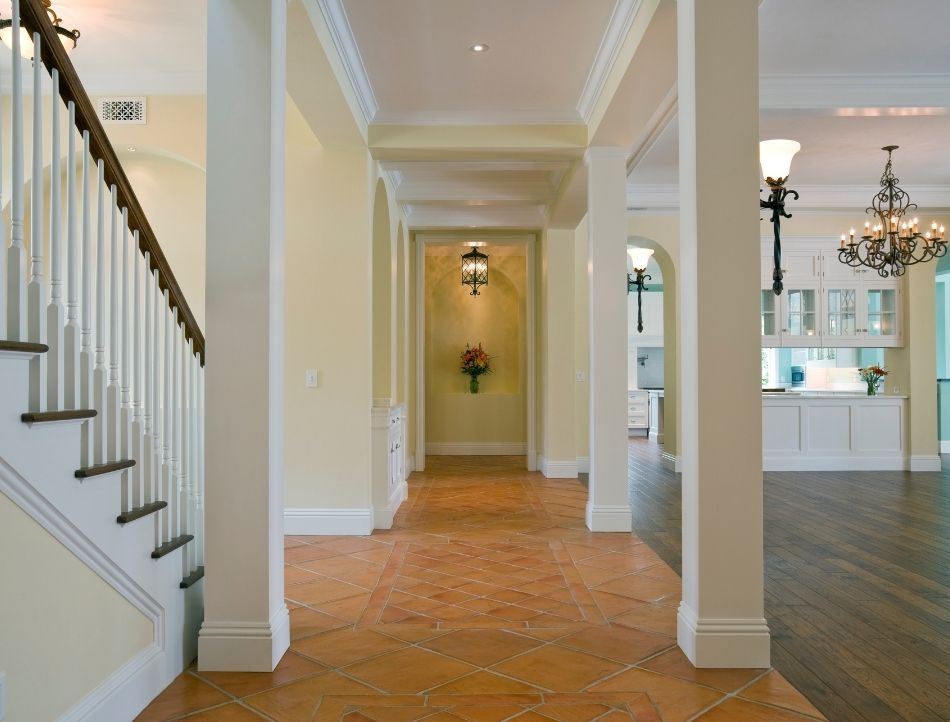Transform your home renovation into an eco-conscious investment that pays dividends for both the planet and your wallet. Smart, sustainable renovations not only reduce your carbon footprint but can slash utility bills by up to 40% while increasing your property’s market value. From energy-efficient windows to recycled building materials, today’s sustainable renovation options offer unprecedented opportunities to create a home that’s both environmentally responsible and financially sound.
Modern homeowners face a critical choice: continue with traditional renovation methods or embrace sustainable alternatives that promise long-term savings and environmental benefits. With energy costs rising and climate concerns mounting, sustainable renovation has evolved from a trendy choice to a practical necessity. By incorporating green building practices, renewable materials, and energy-efficient upgrades, you’re not just renovating – you’re future-proofing your home.
Whether you’re planning a complete home overhaul or targeting specific improvements, sustainable renovation offers solutions for every budget and scope. This guide will help you navigate the essential elements of eco-friendly home updates, from material selection to energy systems, ensuring your renovation decisions benefit both your living space and the environment.
Planning Your Green Renovation Budget
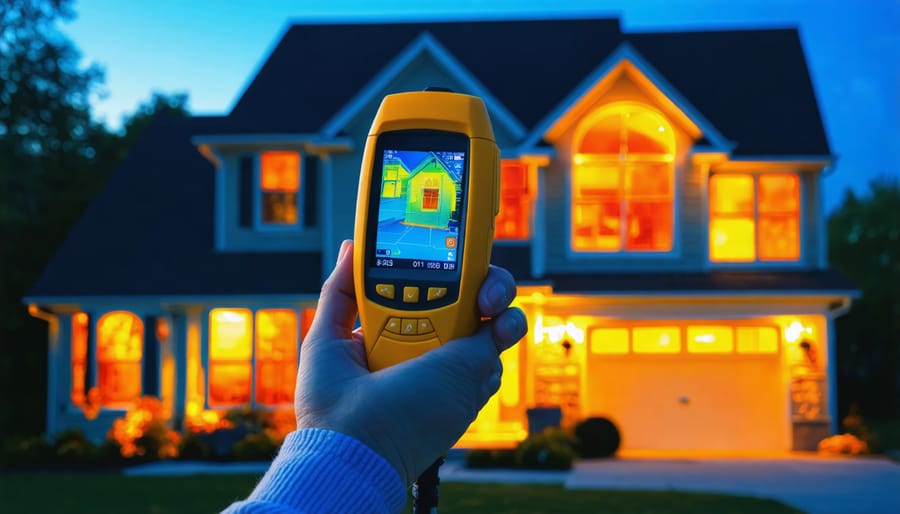
Energy Audit First
Before diving into any renovation projects, conducting a professional energy audit is your smartest first step. Think of it as getting a health check-up for your home – it reveals exactly where energy is being wasted and which improvements will give you the biggest bang for your buck.
During an energy audit, specialists use advanced tools like thermal cameras and blower door tests to identify air leaks, insulation gaps, and inefficient systems. This detailed assessment typically costs between $200-600, but the insights gained can save you thousands in unnecessary renovations and future energy bills.
Armed with your audit report, you’ll have a clear roadmap of priority improvements. Maybe your walls need better insulation before installing solar panels, or perhaps your windows are the main culprits behind high heating costs. This data-driven approach ensures you’re making informed decisions about where to invest your renovation budget.
Pro tip: Many utility companies offer free or discounted energy audits, and some municipalities provide rebates for this service. Check with your local providers before booking an appointment.
Prioritizing Sustainable Improvements
When planning your sustainable renovation journey, start by conducting a home energy audit to identify areas where you’ll get the biggest bang for your buck. Make a comprehensive list of potential improvements, then evaluate each project using two key metrics: return on investment (ROI) and environmental impact.
Begin with projects that offer both significant energy savings and quick payback periods, such as LED lighting upgrades, water-efficient fixtures, and improved insulation. These typically pay for themselves within 1-3 years while immediately reducing your carbon footprint.
Next, consider medium-term investments like energy-efficient windows or smart thermostats. While these require more upfront investment, they often provide substantial long-term savings and comfort benefits.
Create a scoring system for your project list, rating each renovation from 1-5 in categories like:
– Energy efficiency improvement
– Cost vs. savings ratio
– Environmental impact
– Urgency of repair/upgrade
– Available green incentives
Focus on projects scoring highest across multiple categories, and don’t forget to research local rebates and tax incentives that could help offset costs. Remember, the most sustainable renovation is often the one that provides lasting benefits for both your wallet and the planet.
Cost-Effective Sustainable Materials
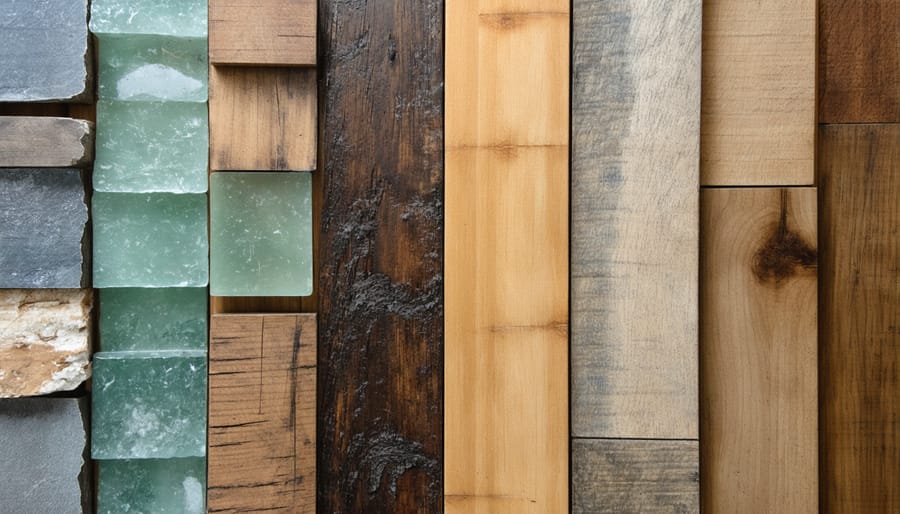
Reclaimed and Recycled Options
Incorporating reclaimed and recycled materials into your renovation not only reduces environmental impact but can also add unique character to your home while saving money. When planning your DIY home improvements, consider visiting architectural salvage yards, which are treasure troves of vintage doors, windows, and hardware. These pieces often come with fascinating histories and superior craftsmanship compared to modern alternatives.
Local demolition sites can be excellent sources for reclaimed timber, bricks, and tiles. Always ask permission before taking materials, and inspect items carefully for quality and structural integrity. Online marketplaces and community recycling groups are also great resources for finding second-hand materials at fraction of retail prices.
Popular recycled options include:
– Recycled glass countertops
– Repurposed wooden pallets for wall features
– Salvaged cabinet hardware
– Reclaimed brick for garden paths
– Recycled plastic lumber for decking
Before incorporating recycled materials, ensure they meet local building codes and safety standards. Clean and treat materials properly to prevent any issues with pests or decay. Consider working with specialized salvage contractors who can help source specific items and verify their condition.
Remember that mixing new and recycled materials often yields the best results, both aesthetically and functionally. Start small with decorative elements before tackling larger structural components as you build confidence working with reclaimed materials.
Local and Renewable Materials
Choosing local and renewable materials for your renovation project not only supports your community’s economy but also significantly reduces your carbon footprint. By sourcing materials from nearby suppliers, you’ll cut down on transportation emissions while often discovering unique, character-rich options for your home.
Look for reclaimed wood from local demolition sites or salvage yards – it’s often more durable than new lumber and comes with a story to tell. Many areas have architectural salvage stores where you can find everything from vintage doors to preserved hardwood flooring at competitive prices.
Bamboo, hemp, and cork are excellent renewable alternatives to traditional building materials. These fast-growing resources can be used for flooring, insulation, and even structural elements. Consider locally-sourced stone for countertops or decorative elements – it’s durable, timeless, and often available from regional quarries.
Don’t overlook agricultural byproducts like straw bales for insulation or sheep’s wool, which offers excellent thermal properties. Many local manufacturers now produce eco-friendly alternatives to conventional materials, such as recycled glass countertops or locally-made clay tiles.
Before making your final choices, ask suppliers about their sourcing practices and certification standards. Many local suppliers can provide detailed information about their materials’ origins and environmental impact, helping you make informed decisions that align with your sustainability goals while supporting your local economy.
Smart Energy-Saving Investments
High-Impact, Low-Cost Solutions
Making your home more sustainable doesn’t always require a hefty investment. There are several energy-efficient home upgrades that deliver impressive results without breaking the bank. Start with draft-proofing your windows and doors using weatherstripping and door sweeps – an affordable weekend project that can reduce heating costs by up to 15%. Installing a programmable thermostat typically costs under $50 but can save hundreds annually on energy bills.
LED bulb replacement throughout your home might cost around $100 initially but pays for itself within months through reduced electricity usage. Consider adding insulation to your hot water pipes using foam sleeves – a $25 investment that keeps water warmer longer and reduces heating costs.
For water conservation, low-flow aerators for your faucets and showerheads cost just a few dollars each while cutting water usage by up to 50%. Installing a rain barrel for garden irrigation can save hundreds of gallons of water annually, with basic systems starting at around $100.
Don’t overlook simple behavioral changes like using cold water for laundry or setting up a composting station. These zero-cost adjustments can significantly reduce your home’s environmental impact while saving money on utilities and garden supplies.
Long-Term Energy Savings
When it comes to sustainable renovations, thinking long-term can lead to significant financial benefits. Smart investments in energy-efficient upgrades can dramatically reduce your energy costs over time. To calculate potential savings, start by reviewing your current utility bills and comparing them with estimated consumption after planned improvements.
Most energy-efficient upgrades pay for themselves within 3-7 years. For example, quality insulation can cut heating and cooling costs by 15-20% annually, while modern LED lighting systems use up to 75% less electricity than traditional bulbs. Solar panels, though initially expensive, typically offer complete return on investment within 5-10 years.
Keep track of your energy usage before and after each renovation to measure real savings. Many smart home energy monitors can help you identify where you’re using the most energy and where to focus your efficiency efforts. Don’t forget to factor in annual maintenance costs when calculating long-term savings – proper upkeep ensures your sustainable improvements continue performing optimally year after year.
Consider creating a spreadsheet to track monthly utility costs and savings. This data will help you adjust your energy usage habits and validate your investment in sustainable renovations.
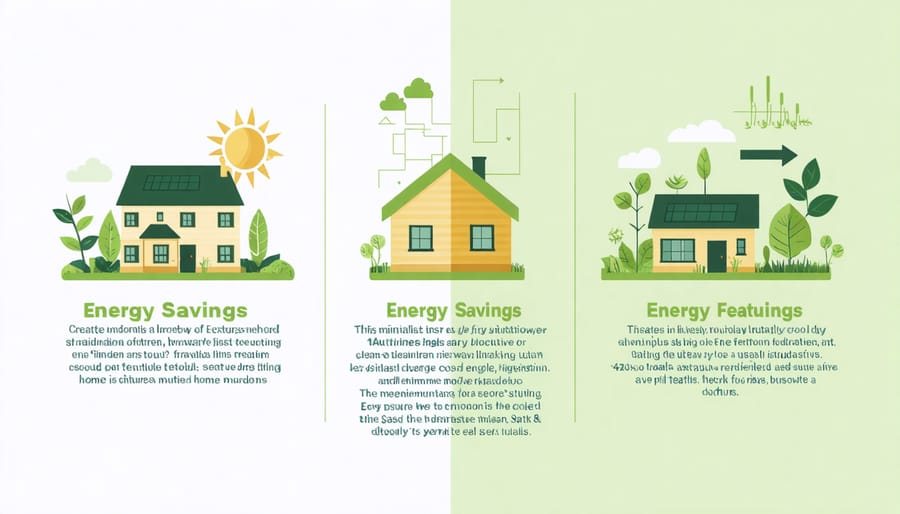
Finding Financial Support
Making your sustainable renovation dreams a reality doesn’t have to break the bank. There are numerous financial support options available that can help offset the costs of your eco-friendly home improvements.
Start by exploring federal tax credits, which can provide significant savings on energy-efficient upgrades like solar panels, insulation, and high-efficiency HVAC systems. Many homeowners can claim up to 30% of the cost of qualifying improvements on their taxes.
State and local governments often offer additional incentives. Check your state’s energy office website for available rebates on energy-efficient appliances, windows, and other green building materials. Some municipalities even provide grants or low-interest loans specifically for sustainable home improvements.
Utility companies frequently run programs that offer cash rebates or bill credits for energy-saving upgrades. Look for special promotions on smart thermostats, LED lighting, and energy-efficient water heaters. Many utilities also provide free energy audits to help identify where improvements will have the biggest impact.
Consider green mortgage options, which allow you to finance both your home purchase and environmental upgrades in one loan. Some lenders offer better rates for energy-efficient homes or renovation projects that improve your home’s sustainability.
Don’t overlook home improvement loans specifically designed for eco-friendly updates. Credit unions and local banks often provide specialized financing options with competitive rates for sustainable renovations.
Remember to document everything carefully – from receipts to energy certificates – as these will be necessary for claiming incentives. Planning ahead and researching available programs can help you maximize the financial support for your sustainable renovation project.
Embarking on a sustainable home renovation journey is more than just a trend – it’s a meaningful step toward creating a better future for our planet while enhancing our living spaces. By implementing the eco-friendly renovation strategies we’ve discussed, you can significantly reduce your home’s environmental impact while enjoying long-term cost savings and increased property value.
Remember that sustainable renovation doesn’t have to happen all at once. Start with smaller projects and gradually work your way up to larger improvements. Whether it’s installing energy-efficient appliances, choosing recycled materials, or implementing water-saving fixtures, every sustainable choice makes a difference.
As you plan your renovation, keep in mind the three pillars of sustainable renovation: energy efficiency, resource conservation, and healthy living environments. Don’t forget to research local incentives and tax credits that can help offset your initial investments.
By choosing sustainable renovation practices, you’re not just creating a more comfortable and efficient home – you’re contributing to a more sustainable future. Take that first step today, and let your renovation journey be guided by both environmental consciousness and smart financial planning.

